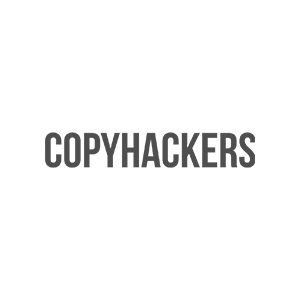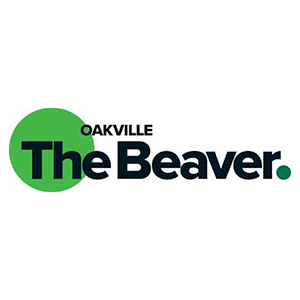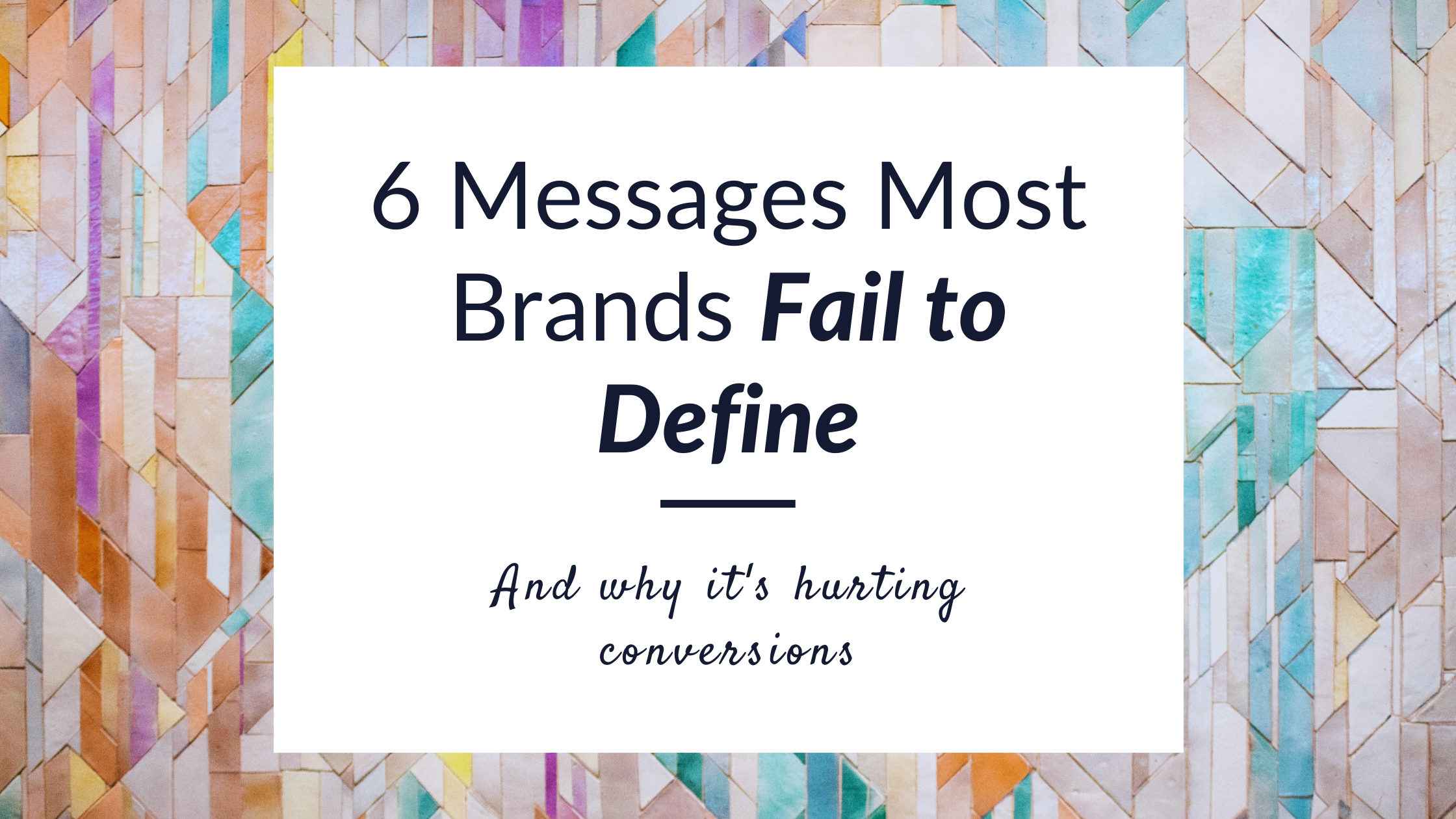 “Well, it’s creative. I’ll give you that.”
“Well, it’s creative. I’ll give you that.”
And from the tone, I knew she meant, “creative not in a good way”.
But it was Suzie Yorke speaking. Now Suzie of Love Good Fats fame.
Before she launched the hugely popular “fat is back” bar, Suzie was an ex-P&G, PepsiCo, Kraft Heinz, Weight Watchers marketer. And she was consulting for my client, a wellness brand.
So when she critiqued the copy, I listened up.
And what I learned from Suzie shaped every worthwhile struggle I’ve had since as a copywriter.
See, Suzie knew this and we didn’t: without a brand messaging strategy the copy was bound to fail
Messages, sure. We had plenty o’ messages.
But from the website to ads to brochures and social media, there was no throughline. No guardrails.
And that made writing good copy exceedingly hard.
Even the best copywriting formulas can’t save your company, your brand, your product if you haven’t defined:
- Who you’re for, specifically
- The single most important problem you solve
- Why your solution is different and better than the rest
- The outcomes or most important value you offer
- The core benefits & features (not a laundry list)
- Reasons to believe/proofs
This list of six core messages is the bare minimum – as every copywriter faced with a long-form sales page knows.
But too few copywriters ever get answers to these core questions. At least, not definitively. Not based on data.
If you’ve been there, you know.
Here’s what happens when copy gets written with no brand messaging strategy
Scenario A: You’re with a start-up, the brand is completely new.
Early copy is churned out fast by a founder or just one copywriter.
Maybe the writer really gets the audience and the value of the offer, so at first, it works.
But as you grow, there’s slippage. Your understanding of the audience and your offer shifts. Other writers step in and create copy from scratch based on the latest briefing.
No surprise if there’s a mismatch between, say, your website and your pitch deck, your sales page, your emails…
“Every campaign you create or new piece of material you build is going to have a slightly different purpose and slightly different messaging. If there isn’t one master messaging document that is used as the starting point, your messaging (and often your positioning) will start to creep as messages are built on modified messages in a chain.” – April Dunford, Obviously Awesome (Ambient Press, 2019, p. 174)
Copy creep. Otherwise known as a primary cause of audience confusion and subpar conversions.
Here’s why.
Your prospects experience you in the ecosystem of your brand’s copy. Copy you may not even be aware they’re encountering because you can’t perfectly control their path.
Which is why the whole ecosystem of brand messaging has to hang together coherently.
No copywriter is surprised when scrappy little brands don’t have coherent messaging. That comes with the growth territory.
But this isn’t just a startup problem.
Scenario B: You’re with an established brand. Big enough to hire writers, maybe even several for content, email, PR…
People inside kinda-sorta know what makes you different and better — at least, from an insider’s perspective.
The people who really get what messages sell are on your sales team. But they’re working too hard to sell. And brand loyalty isn’t what it should be.
Because when your prospects and customers encounter your copy detached from in-person sales, they can’t remember what once seemed so clear.
Maybe they visit your site and wonder, “Why was I buying from these guys again?”
Or they experience the whole ecosystem of your copy as clutter. And they tune out.
Is your brand message lifting the competition?
I was deep in Scenario B when Suzie piped up.
My client’s CEO had taken $300 in wholesale product and turned it into multiple 7-figure sales in 10 years with no documented brand messaging.
Chalk that up to sheer sales talent and a force of nature personality. Plus a better product, faster to the market and everywhere, all at once.
Arguably, the founder had created the category in Canada. Before she raised awareness among consumers, the category was barely a blip on the wellness radar.
At first, it was enough for my client to just be marketing heavily.
But 10 years in, well-funded competitors were gaining ground, going after the incumbent (my client) with a very competitive message.
My client needed more strategic, brand-focused messaging. But until Suzie pointed that out, we didn’t know it.
“Just pull the copy we have into the new site,” the COO said. And like the untrained, inexperienced copywriter I was at that point, I did.
Cut and paste and reworked it a bit. Tada.
Suzie was not having it.
The copy was a deluge of category-focused benefits and science-heavy features.
We had a few taglines and slogans kicking around.
But without a ‘different and better’ message, we were still lifting the category, not the brand.
And had we run with that messaging, it would have been a favor to the very competitors who were eating into my client’s market share.
At the end of the day, it’s a numbers game:
“The reason brand positioning is so important is because of ROI.
The stronger brand positioning you have, the less money you have to spend. So, if a brand has weaker positioning, they can achieve the same market share but they’ve got to spend way more.
And as marketers, our job at the end of the day is about the ROI, and the way you drive profitable growth is two ways: going after other brands and innovating.
You can only do that year after year by having a strong ROI.
If your brand positioning is not strong enough, you have to dial down more and more of your marketing spend because it’s not giving you the ROI … Or you dial down your innovation because it doesn’t pay out.
So it’s a formula. It’s actually a mathematical formula. It’s that simple.” — Suzie Yorke, Start with Positioning
To stay competitive… To get that ROI on your copy and all of your marketing, you need brand messaging that articulates a “different and better” position in your market.
Having a distinct brand message is one thing. Being consistent is another.
Rarely is anyone opposed to brand messaging, in theory. But not everyone likes to stick with a message because, well, it feels limiting… boring even.
Consistency isn’t sexy. But in messaging, it sells. Here’s the science to prove it.
There are three important psychological reasons to be more consistent:
- Effective frequency: it can take up to 13 repetitions of an ad to get a response
- Mere-exposure effect: audiences develop a preference for familiar messages over novel messages… up to a point (the habituation-tedium theory is a strong case for being artful in your repetition)
- Frequency illusion or bias: audiences notice and pay attention to what they’ve seen before (also called the Baader-Meinhof Phenomenon)
How does positive familiarity happen in the minds of our audience?
“The success of an ad depends much on its predetermined brand familiarity.
‘When subjects first see novel stimuli, the novelty leads to uncertainty and tension (Tellis 1997).’ However, repeated exposure can help eliminate this uncertainty and eventually turn it to familiarity. This is called habituation.
With brand familiarity, the first step of habituation has already been surpassed (Edwards 2013)… Because consumers attend to ads selectively, ads of the familiar brand may receive greater attention at lower repetitions than those of the unfamiliar brand (See Figure 3) (Sawyer 1981)… these experiences can add to brand consistency, where the consumer may interpret the familiar brand more favorably.” — Ryan M. Farney (The Influence Exposure Has on Consumer Behavior, Claremont McKenna College, 2016)
But repetition alone doesn’t make brand messages sticky. Interest does.
Really sticky messages have what researchers call complexity. (Perhaps unfairly.)
Studies show that recall of ads is higher for complex messages — but only when repeated. Consumers also preferred these complex messages more than simple ads after the second and third exposure. (Farney)
What counts as complex? According to the research:
- Pointing to weak cons of your competitor
- Refuting another point of view
- Emotional appeal
… all tactics we use in copy that sells.
And all tactics that can be leveraged to differentiate your brand — even in a crowded market.
Not only do more complex, competitive messages separate your brand from the pack. These messages are more memorable. (So, you get more mindshare for a lower cost.)
So, go ahead and create a brand message that’s complex enough to pique interest. (The research supports it.)
2019 research shows exposure to the same message across platforms builds trust
Once you’ve defined your (differentiated) brand message, it pays to repeat it across channels.
According to the 2019 Edelman Trust Barometer Special Report, once consumers have seen your message repeated across three different channels, their trust in it strengthens.
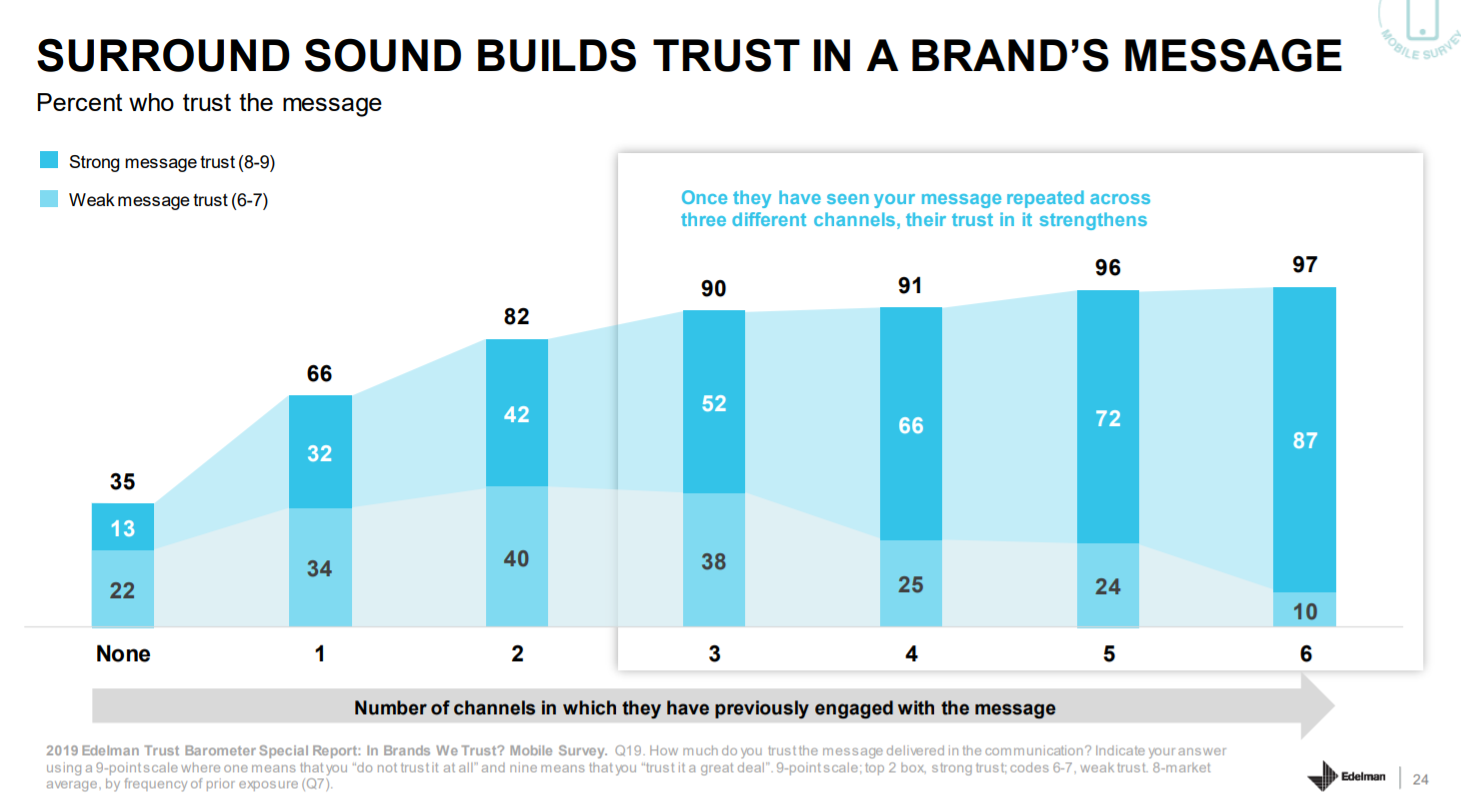
Take Suzie’s own Love Good Fats brand as an example of repeat messaging.
The Love Good Fats brand message is simple but powerful: fat is in, sugar is out. Love Good Fats bars are the ridiculously delicious bars that let you enjoy good fats, conveniently.
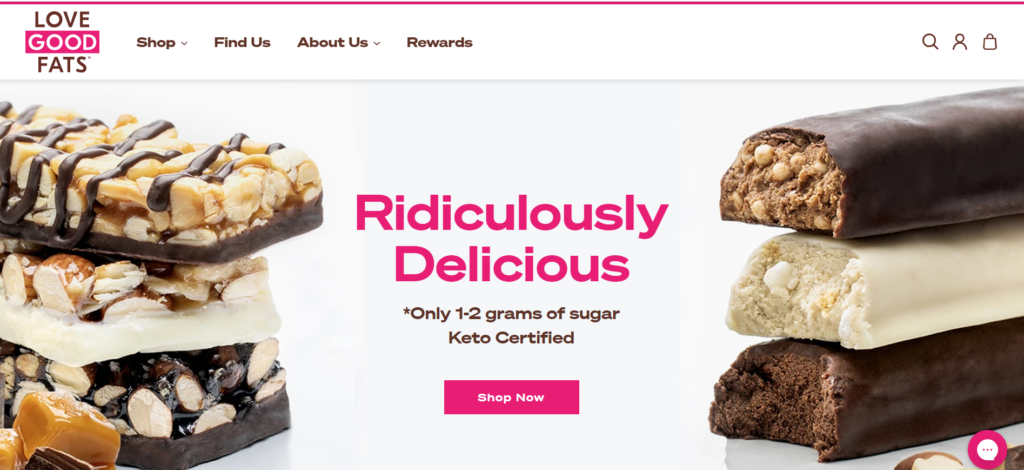
You’ll see the same message everywhere you see the Love Good Fats brand. It’s on the website, the packaging, social media, email. Love Good Fats owns the good fat, low sugar snack space.
What doesn’t work?
Brand messaging clutter and void: it’s a problem conversion copywriters diagnose all the time
Chances are, your copywriter can spot it before you’ve even had a chance to drop an AIDA reference.
When we audit your copy, when we gather the brief, we’re looking for very specific things: stop-’em-dead-in-their-tracks answers to just a handful of questions.
The same questions your prospects ask when they encounter your copy.
If we can’t find…
- Who you’re specifically for
- The single most important problem you solve
- Why your solution is different and better than the rest
- The outcomes or most important value you offer
- The core benefits & features (not a laundry list)
- Reasons to believe/proofs
… then, as copywriters we have our work cut out for us.
But so do your prospects. Only, unlike a good copywriter, prospects aren’t going to do the work.
“When having to process too much seemingly random information, people begin to ignore the source of that useless information in an effort to conserve calories. In other words, there’s a survival mechanism within our customers’ brain that is designed to tune us out should we ever start confusing them” – Donald Miller, Building a Story Brand (pp. 8 -9)
Calorie conservation or not, we all have better things to do than search for a reason to care.
You don’t need to audit an entire funnel to flag this problem. Usually, it’s evident from the homepage. Home is where companies put on their best front.
Exhibit A: Fancy typewriter effect hero section (a strong indicator there’s no clear value prop)
To make things fair, let’s look at the homepage of a professional communications firm. If anyone should know strategic messaging, it’s a PR agency, right?
Take a look and see if you can find any of those six core elements listed above.
Can you find…
- Who NATIONAL is for, specifically?
- The single most important problem the firm solves?
- Why NATIONAL is different and better than the rest?
- The outcomes or most important value their firm offers clients?
- The core benefits and features of their services?
- Reasons to believe in these claims?
No? Me either.
For starters, what on earth is “bold thinking”?
I see a few vague proofs, ok… And we can assume NATIONAL is for big brands who can afford top-tier agencies.
But digging deeper into the site does not surface the rest of those key brand messages.
Exhibit B: Is that a KFC firelog?? Sorry, I can’t remember anything else about this homepage
Sticking with the same industry, let’s see if US firms do better than the Canadian example above.
In fact, let’s look at Edelman’s homepage as Exhibit B.
Try to spot those six key messaging elements.
From our very important list above, I see two reasons to believe. (AdAge ranking and top-tier client work.)
And let’s assume visitors already know that Edelman is for big brands — they’re well-known enough not to have to state that.
Can we find the single most important problem they solve?
Their “different and better” message?
Benefits and features?
The outcomes or value that clients enjoy? (Other than slick-looking campaign images.)
Nope, nope, nope, and nope.
Score: 2 out of 6.
Fair test?
These are just two companies and both B2B professional services, a sector notoriously burdened with the challenge of articulating a “different and better” message. (Look up the top law firms in your region and tell me this isn’t true.)
But in SaaS, in DCT, in every sector, brands are missing out on conversions because they have never defined a distinct set of brand messages.
And no wonder. Defining brand messaging is a crazy-making endeavor
Without Suzie to point the way, we wouldn’t have known where to start making our copy less “creative” and more strategic.
Because marketing people use all kinds of terms to talk about this single source of messaging truth.
It’s like a game of mix and match.
Add to “brand” or “messaging” any of the following: playbook, guide, document, strategy, framework, hierarchy, canvas, blueprint…
Easy to see why it gets so confusing.
And marketers don’t all mean the same thing when they use similar terms for this amorphous thing you’re supposed to have as a brand.
You’ll find maddeningly close but just slightly different takes on the must-have elements.
Like this:
“Product positioning, key benefits, brand pillars, value proposition, audience, and tone are just a few items that need to be taken into consideration. Together, these elements combine to create a full messaging framework that can guide your marketing across every piece of content and every channel. Everything you create, both internally and externally, should be able to map back to this messaging.” — Jenna Hanington, Salesforce, Pardot
And this:
“Your brand messaging guidelines should include:
- Your brand’s USP
- A detailed description of your target audience (or audiences)
- What your company stands for and its goals
- Any slogans or taglines
- Any other messaging that might be used
- Your brand story
- The tone of voice that should be used when writing messages for the brand, including examples of it in use – i.e. snippets of web copy and sample social media posts
- Any words or phrases you don’t want used in brand messages
- When these messages or tone of voice should be used …” – Sujan Patel, Co-founder, Webprofits
Speaking of “story”, that’s a trendy brand messaging element, too. And for good reason.
No wonder “brand story” and “brand storytelling” are two of the top searched high-intent keywords in the copywriting space.
The storytelling ah-ha moment has introduced a flurry of other must-have messaging elements, including a popular take on the Hero’s Journey: Donald Miller’s BrandScript framework. (Building a Story Brand, Harper Collins Leadership, 2017)
Other story advocates, like Valerie Koo, author of Power Stories (Wiley, 2012) build on the Hero’s Journey story with no less than six other core stories your brand should have.
It’s no surprise that so many brands just skip brand messaging.
After all, what’s a brand to do with so much varying advice?
Start with this 6-point brand messaging strategy and ground it in data
Just get really clear on the answers to these, Suzie said:
- Who you’re specifically for
- The single most important problem you solve
- Why your solution is different and better than the rest
- The outcomes or most important value you offer
- The core benefits & features (not a laundry list)
- Reasons to believe/proofs
But don’t make it up. Start with data-driven insight.
Suzie’s advice lines up with the framework used by Graham Robertson of Beloved Brands (CreateSpace Independent Publishing Platform, 2018).
Why believe Robertson? His book is endorsed by Al Ries, author of the iconic Positioning book. So, yeah, there’s something there.
These six points alone pushed our team to get far more clear, persuasive, and consistent in our copy. And that meant more conversions.
Several years have passed since Suzie taught me to scorn mere creative copy.
And the client I mentioned? They’ve been using the same brand messaging since — while growing fast. Today, they get 10x more online sales.
Right out of the gate the website generated a 600% increase in online sales after the copy rewrite grounded in strategic messaging.
And my client isn’t primarily an e-commerce brand. Their main focus is serving retailers.
Will every brand get results like these?
Only if you know what’s wrong with the prevailing advice.
Too many brand messaging strategists are ignoring conversion research — and it’s hurting brands
Brainstorm your brand messaging? That’s not how we write copy that converts.
As Ogilvy (always good for a scathing remark) says,
“Advertising people who ignore research are as dangerous as generals who ignore decodes of enemy signals.” Ogilvy on Advertising (Prion Books, 1983, p. 158)
April Dunford talks about the absurdity of brainstorming in Obviously Awesome, recalling her early days at IBM when she “discovered that the entire positioning process consisted of filling in the blanks of a template”. (p. 42)
As she says, the worst part of the exercise is that…
“You simply plug in your assumptions as they stand today, and voila!… It assumes you know the best way to fill in the blanks.” – April Dunford (p. 43-44)
And that was IBM.
But let’s look at a recent example.
Take the StoryBrand approach. According to Donald Miller, all you have to do is “brainstorm potential messages you might use to populate your BrandScript” and then, “decide on a specific message to use in each section of your BrandScript.” (p. 40)
If only it were that easy.
Wouldn’t it be amazing if we just intuitively landed on high-converting messages?
Conversion copywriters know better. Because the fact is, inside the business, we rarely understand what really motivates our buyers.
Chalk it up to the curse of knowledge. Our product or service expertise makes it hard to empathize with those who don’t know what’s different and better.
That’s why conversion copy is based on data.
Data on your audience’s…
- awareness of the problem you solve
- desire for something different and better
- experience with other solutions
- beliefs about what will really get them to their goals
- objections to believing you
- triggers to take action now
Take my client, once again.
We were so steeped in product knowledge, so absolutely confident based on thousands of testimonials, we didn’t realize this: buyers needed to know why the product is better in very specific ways. And not the ways we assumed.
The real magic? It happens when you get to brand messaging via conversion copy methods
By some miracle of destiny, Suzie and Copyhackers dropped into my life at the same time with the same counsel: ground the copy in customer insight.
Specifically, dig deep for data-based insights on:
- What type of buyer was most likely to fall in love with our product
- The handful of core problems they most needed to solve
- What they believed or knew about the possible solutions
- Why other solutions were failing them
- What competitors said made them different and better
- How ideal buyers wanted to feel as a result of solving those problems
- How the ideal solution would make their lives better
- The most persuasive proofs we could lean on to make our different and better messaging bullet-proof
How’d we get there?
By mining voice-of-customer data and by studying competitor messaging.
To our advantage, my client had been marketing for years and we had volumes of customer insight. We understood their pains, their search for solutions, how other solutions failed, and what they love about my client’s product.
In certain B2C sectors, customers simply volunteer their views on a product more often — but if you don’t have that data, you can get it. (See my post on voice-of-customer research.)
Under Suzie’s guidance, we also ran surveys to test specific brand concepts.
And then we took everything we learned and had a hard think.
- What top themes emerged from the research?
- Which could we back with the most proof?
- How could we make the data-driven insights hang together in a cohesive argument that made the client’s brand the obvious choice for the perfect customer?
To be honest, there were two directions we could have taken with the brand messaging. One was more competitive and the other, more emotional.
That’s when Suzie surprised me.
She said, “Sometimes you just have to make a judgment call.”
Take your new messaging to market (via copy) to find out if it will really convert. Solid advice, once again.
Doing this conversion research + brand messaging changes everything
No hyperbole.
It’s just, that’s what the exercise is designed to do: make your copy everywhere more consistently persuasive.
When you have a messaging strategy like this, it should trigger changes to copy across your pages, emails, ads, social media, video, pitch decks, sales scripts… you name it.
Everything in your copy ecosystem changes.
If you’re a new brand and you created a messaging playbook before writing copy, awesome. Now you have a guide for every piece of copy you write.
Sure, you’ll slice the message differently depending on the context. That’s where the art of copywriting comes in.
But across assets, you’ll constantly reinforce a tightly articulated message that sets you apart from the alternatives.
Because so much changes, it’s not a clean experiment.
You’re not testing a single new page against a control. You’re not testing one button color against another. You’re testing your marketing fundamentals, and as such, you stand to gain far more significant rewards.
There are also intangibles.
Conducting voice-of-customer and competitor research, honing in on a set of powerfully persuasive messages… it’s a process that changes the way you think.
Your mind naturally turns to related ideas, like:
- getting clear on your customer’s journey
- being strategic about message sequencing in each funnel
- understanding what the insights from your research mean for your visual branding
- reinforcing your brand messages at every touchpoint, including customer service
- building on the strengths that make you different and better
But let’s talk about the most immediate reasons brands and copywriters should make brand messaging a priority.
Having conversion-optimized brand messaging makes outsourcing copy easier and less risky
Instead of relying on an external copywriter to define your brand, you can brief the copywriter: this is our brand messaging.
Of course, any copywriter schooled in the Copyhackers methods will do their own research. They’ll want to see that your brand messaging is based on data, and they might need new data for the project.
But they’re not starting from scratch.
When you have brand messaging it’s also easier to work with more than one copywriter. Say you need a sales page writer and an email writer. Now you can keep tighter alignment between the copy across assets, with less rework.
But sometimes you need to write copy in-house.
I’ve created brand messaging with clients who went on to make me proud. One client at a not-for-profit used the messaging to write an entire website. He did a stellar job and he’s not a copywriter.
What else?
Conversion-optimized brand messaging is a starting place for testing
Consider your messaging strategy a theory to test. You front-load the conversion research and then you validate.
Isn’t this a big gamble?
It doesn’t have to be. You can validate brand messaging by writing just one page.
A long-form sales page is a great place to start. It takes you through all the essential elements of messaging.
Here’s how it’s done.
- Draft your conversion research-based messaging for these:
- Who you’re specifically for
- The single most important problem you solve
- Why your solution is different and better than the rest
- The outcomes or most important value you offer
- The core benefits & features (not a laundry list)
- Reasons to believe/proofs
- Use the messages to draft a sales page and create a fully-designed prototype to test.
- Test results by running targeted traffic to the page or by paying for user testing from Wynter, for example, or UserTesting.com.
You can also shop your brand messaging around.
My client, Thrive for Good, did this. We laid out their messaging in a brand guide and collected feedback from people we trust. This isn’t a perfect validation method but can uncover gaps or weak elements in your messaging.
Then, go back to your research and adjust so you can validate it again.
If you get it right, use the messaging strategy to guide all of your copy.
Have plenty of analytical talent on your team? Make testing and adjusting your brand messaging an ongoing practice
In a study of product launches, Bain & Company found that insight-driven launches were more financially successful.
“Learn before you launch. Marketers make initial assumptions about how many people, and what kinds, will buy or engage, but those assumptions should be pressure-tested through social listening and by mining the reams of data now available about consumers.
Launch leaders not only have more advanced data aggregation and analysis, they also take care to understand the nuances of consumer communities.
They are 2.4 times more likely than other companies to use social listening data to refine their launch strategies, message and offerings, the Bain survey shows.
As a result, they are 2.3 times more likely to understand the priorities of their target audience.” — Bain & Co.
Some of the success factors include:
- Using real-time data to monitor and make adjustments to collateral
- Using social listening data to adjust launch strategy and/or creative content, and adjusting collateral based on real-time data
- Testing collateral in target channels using either multivariate or A/B testing before and throughout a campaign
Fact-check your theory with data. If you’re a B2B brand, check out Wynter. It’s a tool made specifically to test and validate your brand messaging. B2C brands can lean on UserTesting.
Copywriting gets faster and easier when you have a conversion-focused messaging strategy
Everyone needs their copy yesterday, but everyone doesn’t have a single source of data-based truth on which to base that copy.
You can speed up the copywriting process when you have brand messaging rooted in voice-of-customer.
- Instead of agonizing over the “different and better” message, you know for sure what makes the brand stand out from the rest.
- Instead of spinning the wheel on a long list of benefits and features, you can zero in on what customers really want, faster.
- Instead of wavering on the reasons to believe, you pull from the proofs you know are most persuasive for your perfect audience.
Plus, having a messaging strategy gets your copy to production faster. It ends debates about what copy to use, where, and when.
Before developing my client’s brand messaging, we were constantly trying new, creative headlines and body copy. Because ads are supposed to be creative, right? Welllllll…..
“Originality is the most dangerous word in advertising. Preoccupied with originality, copywriters pursue something as illusory as swamp fire”. (Ogilvy, quoting Rosser Reeves, p. 24)
Because creativity isn’t always strategic and we were losing out on the frequency effect. With the brand messaging, we stayed on point.
We could lean back on that research every time we wrote because we knew it was solid enough to last until the next shift in the market.
Brand messaging is essential — but not without pitfalls
Mistakes, I’ve made a few.
Brand messaging only works if you get buy-in from everyone who owns or disseminates the message.
That means your first conversion goal is to convert the team to understand and support a consistent, data-driven brand message.
Everyone inside the brand needs to know why you’re now writing based on a messaging strategy. And they need to understand what it means for every piece of copy, all sales materials, all content.
This can be a tough sell to your team or your client’s team. Many teams are daunted by the idea of doing deep-dive research, scared to commit to brand messaging, and reluctant to rewrite their copy.
New brands are more likely to jump on this opportunity. They tend to think this kind of strategy is only available from an agency. (But the truth is, most agencies subscribe to the creative brainstorming approach.)
Here’s what I discovered.
Clients started to get it, buy it, love it when I called it their “Copy DNA”
Sidestepping the industry jargon was essential.
No need to debate the structure of a positioning canvas when what really matters is whether I have the messages to write copy. That’s the point of the process.
I started to explain the end product as their “Copy DNA”. And it clicked.
Because what we’re aiming for is the basic code that makes a brand’s copy unique. The building blocks we can use to write copy for any marketing asset.
I say, “Here’s the thing. We need this conversion research anyway for the copy. Let’s just go one better and nail down your Copy DNA.”
Because it’s true. If you’re a conversion copywriter you absolutely must know the audience, what’s different and better, the outcomes and value, benefits, features, reasons to believe.
You’re just being more deliberate about influencing the brand as a whole.
You’re saying, “Listen, I’m about to discover what really sells. When I do, let’s figure out what that means for the rest of your copy.”
Once you’ve honed your brand messaging, over-communicate to the team
Remember that frequency research? It also applies to your clients and team members who use the Copy DNA.
I once went through this entire process for a client only to later realize they hadn’t understood.
And I had been so proud. I’d done all the conversion research, uncovered the insights, presented my messaging strategy. They loved it.
Every piece of launch copy I wrote showcased how their new brand is different and better in the ways that mattered to their ideal audience.
60 days after launching the new brand, it was the best-selling brand in their portfolio.
They hired me again months later and I checked back on that initial, winning site… only to find a new headline that strayed comically far from the brand messaging. It was a total mismatch but more importantly, it wasn’t based on what the data said would convert.
Here’s how to mitigate the risk of that messaging slippage:
- Give the messaging strategy a fun, branded name and talk about it a lot
- Make the process a stand-alone project separate from copywriting assets
- Show everyone your proprietary process for getting to brand messaging
- Be ultra-consultative throughout the process
- Have a schedule for revisions, validation, testing, and finalization and point people to that project plan on a regular basis
- Present the final brand messaging in a designed pdf guide – ’cause it looks so much more official
- Include a link from the guide to the original research (in case anyone ever doubts you)
In the wrong hands, it can still go sideways (So, add some guidance)
The idea is to use the messaging strategy flexibly but with consistency. That means sticking with the core set of brand messages but adjusting based on the copy context.
Not everyone will know how to do this. There’s a lot more to writing copy than having a set of brand messages.
When I created Copy DNA for a client who planned to write his own brand copy, I included how to map the core messages to the audience’s stage of awareness.
I.e., “If you know you’re writing to a problem-aware audience, the top 10% of your page needs to match that awareness. Here are sample problem-aware headlines.”
I also created an asset table illustrating how to match the messaging to any asset in a funnel (ads, emails, pages) based on the audience’s stage of awareness.
He’s a student of copy, so he’s doing great.
Just know, if you’re a copywriter, your services may be needed well after the brand messaging is laminated.
Sell a consulting retainer? Upsell to write all the assets? All viable options.
So, you have a brand messaging strategy. What’s next?
Go forth and write copy. Copyhackers can show you how.
Already have copy you wrote before? It’s time for an overhaul. Set up a schedule to refresh every asset, starting with those closest to the most important conversions.
Is there an expiry date on your messaging strategy?
Yes, but you won’t know unless you have your ear to the ground for changes in the market.
Keep gathering voice-of-customer. Keep eavesdropping on competitors. You’ll notice when the conversations in your market start to shift.
“Commit to the ongoing pursuit of relevance by actively monitoring the marketplace to remain tuned into the trends, preferences and cultural factors that shape the collective mindset. It is important marketers have a pulse on how their brands resonate across the environment via their own research, customer insights and diligent measurement and observation of the impact of brand activities.” — Gartner 2019 Brand Survey Press Release
Are your perfect buyers starting to talk about the new, shiny competition? Are they questioning whether you’re really different and better? Turning to a whole other category?
Those are clear signs you need to dig back into the research and find a new messaging strategy.
(Bone up on positioning, while you’re at it.)
Now, when I create a brand’s Copy DNA, I include every brand message I need to write copy
These include:
- Who we say the brand is for
- The problem
- Life before for the perfect buyer
- The Big Idea
- The promise or outcome
- The unique selling or value proposition
- How the brand is positioned in the sector
- The brand’s “why”
- The transformational, emotional, functional benefits of the solution
- The features/what they get
- The cost and ROI
- Calls to action
- The risk of doing nothing
- Risk-reversals
- Proofs
(Here’s a downloadable guide.)
Don’t get hung up on branching out until you can answer the six core questions Suzie introduced. Step-wise for the win.
Some brands also like tone, voice, and vocabulary guardrails in their Copy DNA. Fair game.
While you’re at it, why not show off your brand storytelling chops by including core brand stories?
My take is, include whatever gets you to the goal: more consistently persuasive brand copy.
~ Anna
P.S. Need messaging for your B2C e-commerce brand? Find out how we can help here.
P.P.S. I initially wrote this post in late 2019/early 2020 for Copyhackers… Then let it sit for two years while I took in the broader convo on brand messaging.
During that time I’ve been influenced by other takes on this topic, including (most recently) the process for radical differentiation as taught by Louis Grenier of Everyone Hates Marketers. Also, CXL Institute’s Positioning course by Brendan Dell is excellent, as is Blair Enn’s Positioning Bootcamp.
And I’ve been intrigued to watch Josh Garofalo solve the differentiation issue in SaaS out loud in his new Category Story series.
While my thinking has evolved, revisions are unbearable — and so I’m publishing this largely as it was in early 2020 (which might as well be the last epoch), complete with examples from 2019 — like the one below.
P.P.P.S. When I wrote this post I was very taken with the reMarkable website. It struck me as an ideal example of a brand that ticks off all the strategic messaging boxes.
Check out this homepage/long-form sales page and see how many you can identify. (I give it 6 out of 6).
























